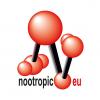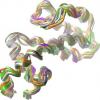Do you have any references for the potential development of an immune reaction to the Cerebrolysin peptides? I thought antigens were specifically denatured as part of the processing method for the final product? They don't simply take porcine protein directly, dump it in some saline, and call that Cerebrolysin. If what you claim is true, and there is the potential for development of a progressive atrophic neurological disorder from taking Cerebrolysin then anyone who injects it is essentially risking their life. 
First, let me say that it's definitely not a
claim, but a very hypothetical possibility.

I was referring to the generation of endogenous antibodies, not antigens included in CRB itself. If you haven't read my
structure posts (#36 and #33), the primary action of CRB is probably mediated through CNTF fragments.
This is from Xencor
application US20050064555:
Immunogenicity may limit the efficacy and safety of a protein therapeutic in multiple ways. Efficacy can be reduced directly by the formation of neutralizing antibodies. Efficacy can also be reduced indirectly, as binding to either neutralizing or non-neutralizing antibodies typically leads to rapid clearance from serum. Severe side effects and even death can occur when an immune reaction is raised. One special class of side effects results when neutralizing antibodies cross-react with an endogenous protein and block its function.
Ciliary neurotrophic factor (CNTF), which was first identified as a neuroprotective cytokine, has attracted significant attention for its ability to promote weight loss. CNTF may act by leptin-like or non-leptin pathways.
However, recent clinical trials of CNTF demonstrated that a large fraction of patients raise neutralizing antibodies against CNTF. These neutralizing antibodies likely decrease the efficacy of the drug. More seriously, neutralizing antibodies could potentially interfere with the neuroprotective functions of endogenous CNTF.
...
By “reduced immunogenicity” and grammatical equivalents herein is meant a decreased ability to activate the immune system, when compared to the wild type protein. For example, a CNTF variant protein can be said to have “reduced immunogenicity” if it elicits neutralizing or non-neutralizing antibodies in lower titer or in fewer patients than wild type CNTF. In a preferred embodiment, the probability of raising neutralizing antibodies is decreased by at least 5%, with at least 50% or 90% decreases being especially preferred. So, if a wild type produces an immune response in 10% of patients, a variant with reduced immunogenicity would produce an immune response in not more than 9.5% of patients, with less than 5% or less than 1% being especially preferred.
This last paragraph seems to suggest that it is indeed possible for humans to generate antibodies to exogenously administered CNTF (also suggested by
WO2002070698), though I haven't been able to find any papers touching on this either way.
This was borne out to some extent by the drug Axokine, a 15-mer CNTF fragment with 2 substitutions. From
wikipedia: "According to a March 31, 2003 Regeneron press release, a major problem with the treatment was that in nearly 70% of the subjects tested, antibodies against Axokine were produced
after approximately three months of treatment." Even if antibodies didn't affect endogenous CNTF functions, they could very well limit the effectiveness of the drug, as occurred with most patients in the axokine trials.
Given the lack of testing of strong CNTF drugs in such applications, especially examining long-term consequences in the young, it seems to me that there's a risk of overextending the commonly-accepted notion of safety in much the same way many people do with piracetam. So moreso than the month-long administration (though that's fairly nonstandard as well), I was suggesting some degree of caution in recommending longer treatments. Prolonging treatment beyond a month is very uncommon, even in situations (severe AD) in which they would want to maximize efficacy, with comparably little concern for side effects. The product brochure arvcondor scanned for the newest Everpharm product suggests that up to 50mL may be administered in severe cases, but suggests a total of 10-20 days in a treatment cycle. As evidenced by several papers posted in this thread, one cycle of normal dosing can exert an effect several months after cessation. And perhaps most compelling of all, I can't believe that Ebewe would
ever have recommended a standard treatment schedule limited to only 80 days/year, unless they had data suggesting it was desirable for safety or continued efficacy.
Was the EOD recommendation regarding prolonged treatment, or simply an alternate dosing schedule? What product version are you looking at? Also, I'm wondering about your assertion that tolerance isn't a factor; is this based on the reports in this thread, or a specific idea of how these trophic factors and their receptors react to superphysiological levels? Because that's one of my outstanding questions concerning neurogenesis in general, and long term use of NGF-inducers like lion's mane.
































 This topic is locked
This topic is locked















